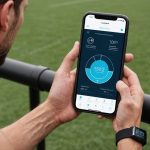Understanding Ocean Science in Surfing
To master the art of surfing, one must first delve into the depths of ocean science. At its core, surfing relies heavily on understanding wave dynamics, which dictate how waves form, travel, and break. These dynamics are pivotal in effective wave selection, allowing surfers to identify optimal waves for performance. Wave height, period, and direction are aspects surfers analyse for this purpose.
Historically, surf forecasting emerged as a critical tool for surfers with roots in ancient maritime navigation. Early surfers relied on sky observation and local knowledge to predict surf conditions. Today, surf forecasting uses advanced techniques to anticipate how waves form based on oceanographic data. Factors such as wind patterns, ocean currents, and the seafloor’s topography aid in forecasting waves.
In the same genre : Boosting Rowing Crew Bonding: Proven Strategies for Stronger Team Cohesion in UK Clubs
The development of surf forecasting techniques has significantly contributed to surfing’s popularity and accessibility. By accurately predicting surf conditions, surfers can maximise their time on the water rather than waiting for the perfect break. This scientific approach ensures that wave selection is not merely about intuition but also strategy, enabling surfers to understand and interpret oceanic conditions more effectively. With the integration of ocean science into the sport, surfing continues to evolve, blending traditional skill with scientific innovation.
Role of UK Surf Coaches in Wave Selection
In the world of surfing, UK surf coaches play a pivotal role by employing strategic coaching techniques to enhance decision-making in wave selection. Effective methodologies focus not only on the surfer’s abilities but also on integrating scientific data into training. This fusion of art and science equips surfers with the necessary tools to identify and ride optimal waves.
Topic to read : Revamping tennis courts: an essential guide for uk clubs to reduce player injuries
Methodologies Employed by Coaches
UK surf coaches adopt a variety of methodologies, often tailored to individual surfer needs. They critically analyse wave dynamics and incorporate data on wave forecasting to guide surfers. Techniques such as video analysis allow coaches to evaluate a surfer’s session, revealing areas for improvement. By integrating real-time data, coaches provide insights into choosing the right waves, factoring in elements like wave height and direction.
Case studies have demonstrated how precise decision-making, grounded in robust coaching techniques, can significantly improve performance. For instance, coaches who consistently use data-driven methods have seen their surfers make better wave choices, leading to enhanced skills and surfing experience.
Coach-Surfer Collaboration
The relationship between coach and surfer is essential. Effective communication enhances performance, ensuring surfers understand and execute the strategic advice provided. Building a trusting relationship allows coaches to tailor their techniques effectively, fostering both immediate and long-term surfing success.
Practical Techniques for Wave Selection
Navigating the vastness of the ocean to find the ideal wave can be daunting. Understanding practical wave selection techniques empowers surfers to maximise their experience. A foundational approach involves analysing wave dynamics such as wave height, period, and direction, which are critical for effective surfing. Recognising patterns in these factors helps surfers make informed decisions on which waves to ride.
Surfing techniques are enhanced when surfers learn to read the sea conditions accurately. Using tools such as wave and swell maps is crucial. These resources offer valuable insights into wave formation, helping surfers anticipate the best opportunities. Digital platforms now provide real-time wave forecasting, making it easier for surfers to adapt their plans based on incoming data.
To refine their skills further, surfers should consistently practice paddling, positioning, and timing. These practical tips are crucial for honing wave riding techniques. For instance, improving paddling strength aids in catching faster-moving waves, while sharpening one’s sense of timing enables a smoother ride.
Ultimately, by integrating these practical strategies and resources, surfers can not only enhance their wave riding skills but also experience a more fulfilling, dynamic surfing adventure.
Data Utilization in Wave Selection
In modern surfing, data analysis is an indispensable tool for effective wave prediction and scientific research. Surfers utilise a variety of data types to refine their methods, enhancing accuracy in wave selection.
Types of Data Used by Coaches
Surf coaches rely on diverse data forms to optimise wave selection, with buoy readings and tide charts being foundational. Buoy data provides crucial information on wave height, period, and direction, while tide charts help surfers understand sea level changes. This data informs strategies, allowing surfers and coaches to anticipate wave patterns more accurately.
Satellite imaging and advanced technology offer additional insights, improving wave prediction accuracy. Satellite data can reveal larger oceanic shifts, such as currents and wind patterns, impacting local surf conditions. By integrating this data, coaches enhance surfers’ ability to align their skills with ocean behaviour.
Case studies from surf schools highlight the transformative impact of data-driven approaches. For instance, incorporating real-time buoy data has enabled coaches to improve wave selection, leading to better performance outcomes. By harnessing these resources, surfers achieve a more refined and informed surfing experience, demonstrating the significant role of data in advancing surfing strategies.
Visual Representation of Ocean Science
Visual aids play a crucial role in comprehending complex oceanographic concepts within the surfing community. Understanding the dynamic interplay of factors such as wave formation and ocean conditions becomes more accessible when portrayed through clear and effective diagrams. These visual tools can simplify abstract principles, making them easier to grasp for both surfers and coaches.
Innovative Approaches to Wave Conditions
To illustrate wave formation, diagrams that capture the sequential development of waves from creation to breaking are particularly valuable. Such representations can pinpoint the impact of variables like wind speed, ocean depth, and shore inclination on wave shape and strength. By breaking these concepts into smaller parts, surfers can better anticipate wave behaviour, enhancing their reaction time on the water.
Innovative methods now include videos that offer a dynamic insight into how ocean conditions affect surfing, showing changes in wave dynamics in real-time. These multimedia resources are instrumental in bringing static diagrams to life, thus deepening surfers’ understanding.
For long-term learning, these visual aids can be integrated into training modules, ensuring that surfers receive consistent, engaging education on ocean science. This not only empowers surfers to refine their skills but also fosters informed decision-making out in the waves.











